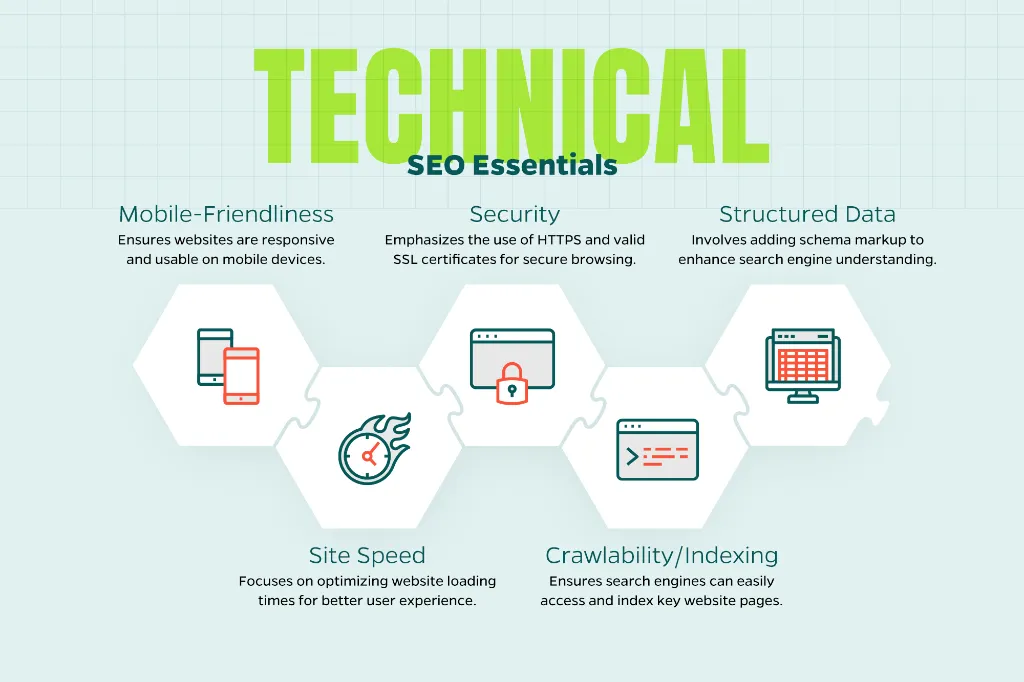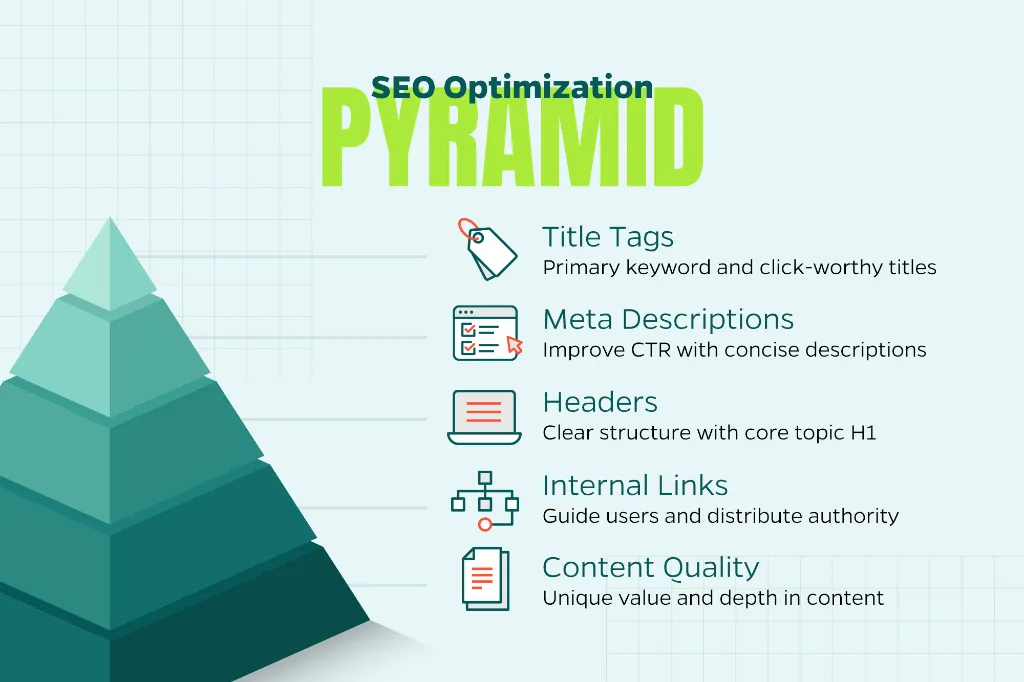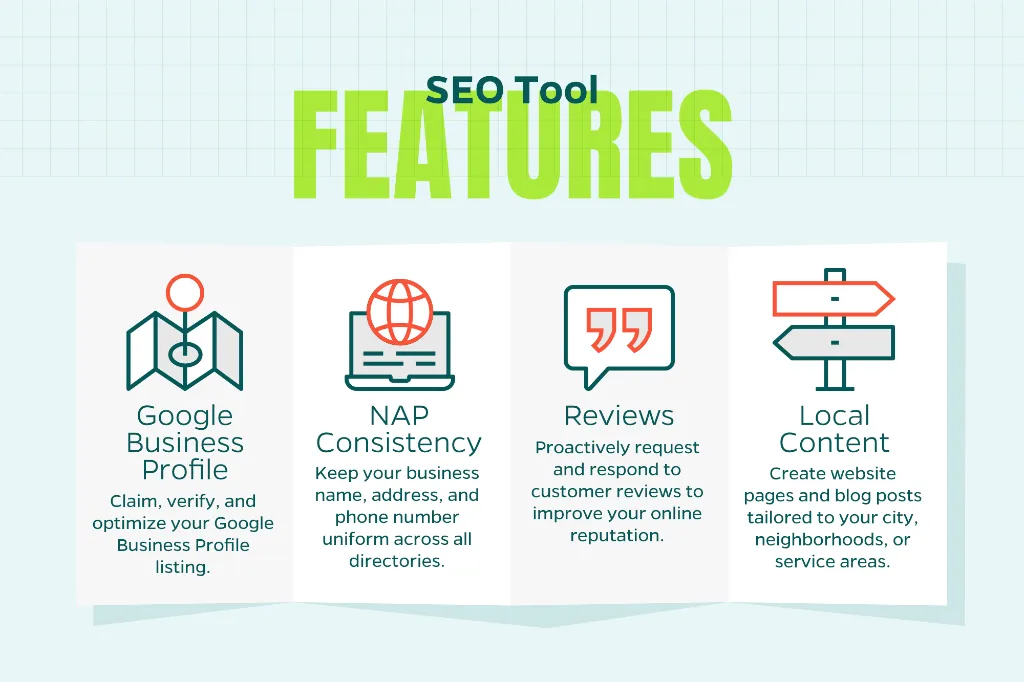SEO can feel complex at first glance. Between technical setup, content creation, and constant algorithm changes, many businesses aren’t sure where to begin. Thankfully, a clear, practical checklist keeps you focused so you can avoid costly mistakes and set your site up for sustainable growth.
At Straight North, we’ve partnered with organizations from startups to enterprise teams. Through our experience we have learned a basic truth: SEO isn’t guesswork — SEO is a strategic, repeatable process. You can use this checklist to confidently launch or refine your SEO program.
1. Define Your Goals and KPIs
Before planning tactics, establish your direction. If you don’t have clear goals your activity won’t translate into impact.
Questions to ask:
- Brand vs. sales: Are you aiming for greater visibility or direct revenue?
- Geography: Do you want more local customers or nationwide reach?
- Primary outcome: Is lead generation, e-commerce sales, or authority-building the priority?
KPIs to measure:
- Rankings: Improvements for priority keywords.
- Traffic: Percentage growth in organic sessions.
- Pipeline/revenue: Increases in qualified leads or online sales.
- Efficiency: Lower cost per acquisition versus paid campaigns.
Example: A B2B manufacturer might target “20% more quote requests from organic search in six months,” while a local dentist might focus on “30% more calls from Google Maps.”
2. Understand Your Audience and Keywords
Great SEO starts with your customers. You want to know what they are searching for, how they speak, and what they need.
How to approach it:
- Keyword research and SEO tools: Use platforms like Google Keyword Planner, BrightEdge, SEMrush, or Ahrefs to discover search demand.
- Search intent: Categorize user queries by intent to align content with their goals.
- Informational intent: “How does cloud backup work?”
- Transactional intent: “Buy cloud backup service”
- Navigational intent: “Dropbox login”
- Prioritization: Choose keywords with a realistic balance of volume, intent fit, and competition.
Long-tail phrases often convert better. “Best CRM for small accounting firms” may drive fewer visits than “CRM software,” but should bring you higher-quality leads.
Example: A home improvement client grew faster by targeting “kitchen cabinet refacing cost” rather than the broader “kitchen remodeling.”
3. Evaluate Your Website’s Technical Health
Technical SEO is your site’s infrastructure. If it’s slow, unstable, or hard to crawl, rankings suffer — no matter how good the content is.
Technical SEO checklist:
- Mobile friendliness: Most searches happen on mobile. Validate responsiveness and usability.
- Site speed: Aim for pages loading in 2–3 seconds; address render-blocking code, large images, and server lag.
- Security: Use HTTPS with a valid SSL certificate.
- Crawlability/indexing: Ensure key pages are indexable; fix broken links, duplicate content, and stray noindex tags.
- Structured data: Add schema markup to clarify meaning and enable rich results where relevant.

Quick win: Compress and properly size images before upload. Unoptimized media is a top cause of slow pages.
4. Audit and Optimize On-Page Elements
On-page SEO aligns what users see with what search engines understand.
Core elements to optimize:
- Title tags: Keep under ~60 characters, include the primary keyword, and write for clicks.
- Meta descriptions: Aim for 150–160 characters to improve CTR, even if not a direct ranking factor.
- Headers: Use clear H1/H2/H3 structure; make your H1 describe the page’s core topic.
- Content quality: Remove thin/duplicate pages; deliver unique value and depth.
- Internal links: Guide users to related pages and distribute authority intentionally.

Example: A local law firm improved visibility by rewriting titles to include location terms (e.g., “Chicago Personal Injury Lawyer | Free Consultation”).
5. Build Content Around Topics, Not Just Keywords
Modern SEO rewards depth and coverage. Establish topical authority rather than chasing one-off terms.
How to build authority:
- Pillar pages: Create comprehensive guides on core subjects (e.g., “Complete Guide to Digital Marketing”).
- Topic clusters: Publish supporting pieces (SEO, PPC, content, email) that explore subtopics.
- Strategic interlinking: Connect pillar and cluster content to signal relevance and expertise.
Example: A SaaS brand can build a “Project Management” hub with tools, methodologies, templates, and case studies. This comes across as a clear signal of expertise.
6. Strengthen Your Off-Page SEO
Off-page SEO, especially backlinks, act as third-party endorsements of your credibility.
You can earn links ethically with:
- Flagship content: Publish useful, shareable assets (original research, guides, infographics).
- Guest contributions: Pitch articles to reputable industry publications.
- Partnerships: Leverage associations, chambers, and nonprofits for mentions and links.
- Link hygiene: Monitor your backlink profile and disavow toxic links when necessary.
Example: A manufacturing client published supply chain research that earned industry coverage, boosting authority and referral traffic.
7. Don’t Forget Local SEO (If It Applies)
For businesses with a physical presence or service area, Local SEO is a game-changer. Appearing in Google’s Local Pack (the featured businesses in the map section) can directly influence phone calls and foot traffic.
Local SEO checklist:
- Google Business Profile: Claim, verify, and optimize your listing.
- NAP consistency: Keep name, address, and phone uniform across directories.
- Reviews: Proactively request and respond to customer reviews.
- Local content: Create pages and posts tailored to your city, neighborhoods, or service areas.

Example: An HVAC company that prioritized reviews and local updates saw a sharp increase in calls from Google Maps within three months.
8. Set Up Tracking and Analytics
You can’t improve what you don’t measure. Analytics connects effort to outcomes.
Tools to implement:
- Google Analytics 4: Track traffic, engagement, and conversions.
- Google Search Console: Monitor impressions, clicks, and query performance.
- Call tracking: Attribute phone leads to organic efforts for service-based businesses.
- Dashboards: Use Looker Studio or a similar tool to centralize reporting.
Pro tip: Configure goal and event tracking (form fills, quote requests, purchases) so you’re measuring results, not just visits.
9. Monitor, Test, and Adapt
SEO is dynamic. Markets shift, competitors evolve, and algorithms update.
How to stay ahead:
- Monthly reviews: Watch trends and diagnose anomalies early.
- Content refreshes: Update older pieces with new data and examples.
- Format experiments: Test videos, FAQs, comparison pages, and how-to guides.
- Algorithm awareness: Track major updates and adjust where needed.
Example: Sites with thin or low-value pages lost visibility, while comprehensive, people-first content gained ground.
Final Thoughts
Long-term SEO success depends on a solid foundation: clearly defined goals, a technically sound website, purposeful content, trustworthy backlinks, and reliable analytics. When SEO is treated as a continuous strategy rather than a one-time effort, it builds momentum and delivers lasting results.
At Straight North, we’ve helped clients turn checklists into measurable growth. If you’re ready to move from planning to execution, reach out to Straight North. We’re here to guide you step by step.








